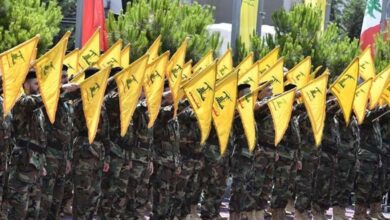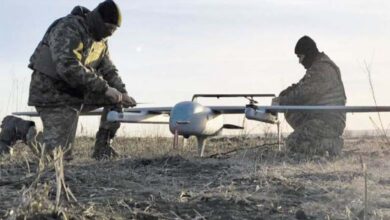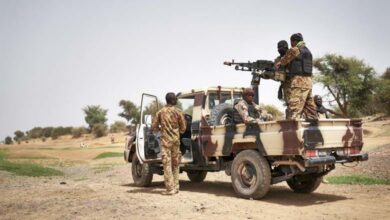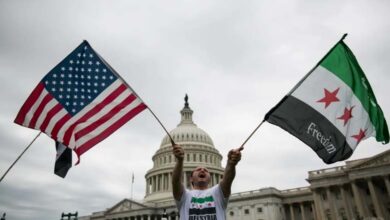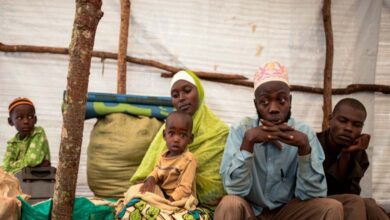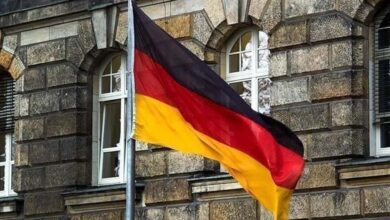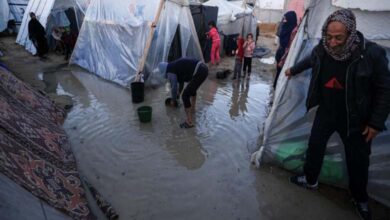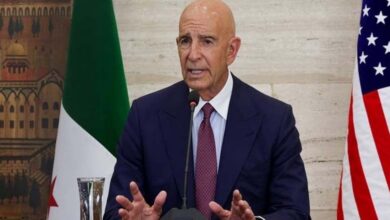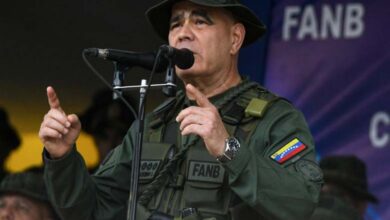Sudan War: Multiple Scenarios Shaped by Tactical Shifts
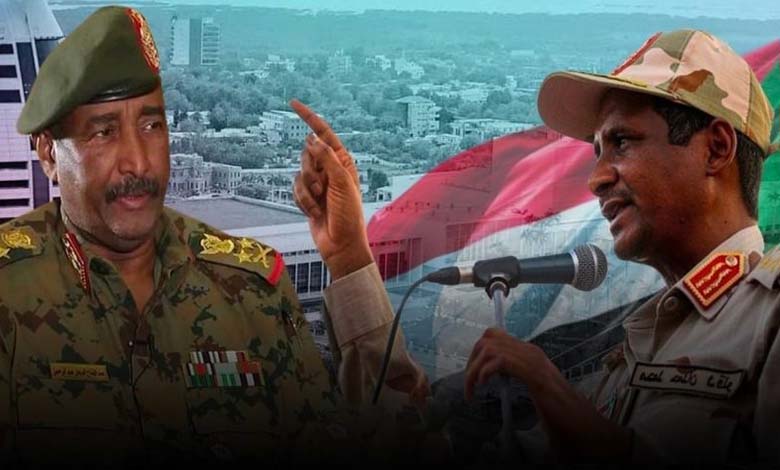
Continuous clashes persist in the capital, Khartoum, as well as in Al-Jazira and El Fasher, amid tactical advances and withdrawals and an intensified use of suicide drones.
These battlefield developments keep the war scenarios in Sudan open to all possibilities, despite nearly two years having passed since the fighting began.
Military sources told Al-Ain News on Friday that the Sudanese army has taken control of the “Ad Babakr” area and the university city in East Nile, while the sounds of heavy clashes and rising flames and smoke were observed in the sky over the region.
-
“Rapid Support Forces” Welcome Washington’s Call for Sudanese Talks in Switzerland and Confirm Their Participation
-
The Popular Movement Insists on Including Rapid Support Forces in Negotiations with the Government
According to the military sources, army units are advancing deeper into the capital, Khartoum, aiming to seize control of the “Presidential Palace.”
The sources also stated that the Rapid Support Forces (RSF) have strengthened their combat presence, deploying snipers on the rooftops of high-rise buildings to protect the Presidential Palace, military facilities, and government institutions under their control in the capital.
Expanding the Battlefield
As the conflict expands, military sources said that the RSF launched suicide drones early Friday morning towards the cities of Merowe and Dabba in Northern State.
-
The crisis worsens in Sudan… 8 Months of fighting between the Army and Rapid Support Forces, What’s next?
-
UN Concerns Grow Over Escalating Fighting in El Fasher Between Army and Rapid Support Forces
According to the same sources, the Sudanese army‘s air defense systems successfully intercepted and destroyed the drones in midair without any casualties.
The sources further reported that the RSF had conducted a tactical withdrawal of some of its forces from the states of Khartoum and Al-Jazira, moving westward toward Darfur.
The military sources confirmed that the RSF forces retreating westward are reinforcing their presence in El Fasher to tighten their siege and secure control over the city, aiming to bring the entire Darfur region under their grip after already seizing the cities of Geneina, Nyala, Zalingei, and Ed Daein.
-
Meeting between Representatives of the Sudanese Army and Rapid Support Forces in Addis Ababa
-
Sudanese army resorts to drones to halt Rapid Support Forces’ advance
The sources noted that the RSF‘s current strategy is focused on establishing exclusive control over Darfur, a region equivalent in size to France.
Diverse Scenarios
In this context, writer and political analyst Amir Babiker stated: “Although Sudan has experienced continuous wars between the central government and armed opposition movements since independence, the current war is clearly different because it involves factions that were all at the pinnacle of power.”
Babiker added: “In previous wars, battles took place in peripheral areas, far from major cities, as armed movements aimed to exhaust the military and economic resources of ruling regimes rather than directly target urban centers. There was never an intense attack or an attempt to control a major city.”
-
Sudanese Rapid Support Forces leader threatens to pursue Abdul Fattah al-Burhan and calls on the army to withdraw from the fighting
-
New Field Gains for Rapid Support Forces Disrupt the Sudanese Army
He continued: “Looking at the experience of the Sudan People’s Liberation Movement before the Naivasha Agreement, it never took control of any major cities in the south. Yet, an agreement was signed with the central government, leading to a referendum that resulted in the secession of South Sudan and the establishment of an independent state.”
Babiker elaborated: “The ongoing war erupted in the heart of cities, including the capital, Khartoum, between factions that were already stationed within these cities and were previously coordinating closely before the war broke out.”
He further explained that “the army’s advance is expected after it absorbed the initial shock of the conflict, which took a long time. Meanwhile, the RSF has retreated to its original strongholds.”
-
Following the al-Assad’s method, the Rapid Support Forces are bombing civilian areas with explosive barrels
-
A bloody day in Sudan with intensified battles between the army and the Rapid Support Forces
However, he added: “Despite the RSF’s retreat in Khartoum and Al-Jazira, it still holds a presence in all five Darfur states, controlling their capitals and main cities, except for El Fasher, the capital of North Darfur, which it continues to besiege but has not yet managed to capture.”
He noted that “some believe that RSF control over El Fasher would lead to Darfur’s secession. However, I think this is an inaccurate reading, as Darfur could theoretically secede without necessarily controlling El Fasher—similar to how South Sudan separated without the fall of Juba, Malakal, or Wau.”
-
Dozens of officers surrender after the Rapid Support Forces tightened their siege on the army headquarters
-
Armed Forces and Militant Movements Supporting the Sudanese Army Sign Transitional Document
Tactical Shifts
Meanwhile, writer and political analyst Mohamed Al-Mukhtar stated that the Sudanese army‘s advance in Khartoum is not only through the northern part of Al-Jazira State but from multiple directions. This follows the RSF’s continued withdrawal in recent weeks from Wad Madani (the capital of Al-Jazira State) and the Jili Refinery (north of Bahri), with RSF forces now regrouping in Khartoum and East Nile—indicating tactical shifts in the course of the war.
Al-Mukhtar said: “If the RSF is aiming to consolidate its presence in Khartoum and defend it—as it did in the early months of the war when it controlled Khartoum’s entry points and set up ambushes for the army, later expanding towards Madani, Sennar, and Blue Nile State—then it suggests an attempt to drain the army’s resources once again while activating other battlefronts across different states.”
-
The Sudanese Army’s Reliance on Mercenaries and Foreign Forces: The Collapse of Local Military Capabilities
-
Sudanese Army’s Military Gains Undermine Chances of a Peaceful Resolution to the Crisis
He continued: “However, if the army continues its advance towards Khartoum and takes control of parts of the city, it raises the question: Where have the RSF forces retreating from Al-Jazira, the Jili Refinery, and those already stationed in Khartoum gone?”
Al-Mukhtar added: “This suggests that the war could escalate into a more violent phase in the coming period. This is evident from the increased air raids by the army on Nyala and the intensified RSF attacks on El Fasher to secure complete control over it.”
-
The Sudanese Army and the Use of Chemical Weapons: Recent War Violations and Humanitarian Impact
-
Sudanese Army Violations Against Civilians: War Crimes Threatening the Country’s Future
Since mid-April 2023, the Sudanese army and the RSF have been engaged in a conflict that has resulted in more than 20,000 deaths and nearly 14 million displaced persons and refugees, according to the United Nations and local authorities. However, research conducted by American universities estimates the death toll to be around 130,000.
The war has prompted growing international and UN appeals for an end to the conflict to prevent Sudan from descending into a humanitarian catastrophe, as millions face starvation and death due to food shortages amid fighting that has spread to 13 of the country’s 18 states.
-
The Sudanese Army’s Reliance on Mercenaries and Foreign Forces: The Collapse of Local Military Capabilities
-
The Army and the Muslim Brotherhood Loot Sudanese Properties in Omdurman and Wad Madani


